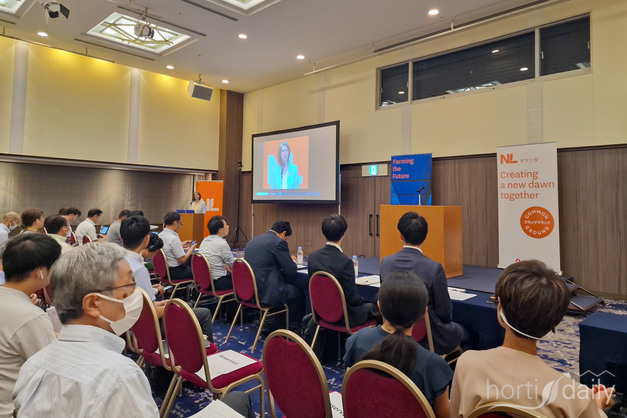"Japanese growers are looking for digital support. However, a significant hurdle is that most digital tools available from overseas, e.g. from the Netherlands, are also based on the needs of Dutch growers. Though, the need is so different in Japan as we don't need it as high-tech as in the Netherlands. Digital tools need to be adjusted to the local needs as each product grows differently. Therefore, growers often have to start all over again when using a tool that's designed for the international market," said Aad van den Berg, CEO of Delphy Japan.
"Climate change is testing us more than ever, which is challenging, but we're very hopeful for the future," said a participant at the NL Embassy seminar. During the event, Japanese greenhouse and vertical farm growers, suppliers and research organizations were invited to share their views on the market. The main themes that kept coming back were automation, balancing OpEx with product margins and the use of renewable energy.
It became clear that there is a need for transparency in data to push the data management systems that will help to create an ecosystem. However, that's easier said than done according to some. "Many are speaking of phenotyping in the greenhouse and grow autonomously. However, to grow autonomously first, you need accurate crop phenotyping. Often, there's data on the climate, but no data on the crop. To speed up the autonomous greenhouse industry, we need more accurate crop or, and, phenotyping systems," said Aad. He therefore hammers on the importance of data transparency and data sharing as it will help to push the management systems, creating an ecosystem for the entire horticulture industry.

The seminar at the Dutch Embassy of Agriculture in Japan
When asking the participants whether AI should take over the greenhouse, Aad was given a hard no. He then clarified, "Plants will grow anyhow, so that's not the solution." Commenting on Aad's question, Laurens of Blueradix said that head growers cannot be replaced by AI yet. "However, the technology will be there in the years to come to make it even better, complemented by AI, Phenotyping and robotics. Thus far, we still need the head growers."
Artechno's Sven Duijvestijn tuned in online to showcase the company's propagation systems that can be used as a complimentary benefit to greenhouse growers, propagating more robust young plants that can later be grown in the greenhouse. The line also comes as a full-on solution including, seeding, transplanting, harvesting to packaging. Artechno has received interest for its VF+ system from Japan so they might be tapping into the market shortly.
Notable differences Eri sees for Japanese vertical farms vs others are hygiene and the production capacity. "In Europe, hygiene standards aren't the same. Hygiene procedures are much stricter in Japan given that is a big marketing asset they're focusing on; hygiene, ready-to-eat and grown without pesticides. As well as the farms, in Japan they are truly seen as factories as, in the end, they're 'just' producing leafy greens."
 For more information:
For more information:
Department for Agriculture, Netherlands Embassy
Yuko Saito
tok-lnv@minbuza.nl
